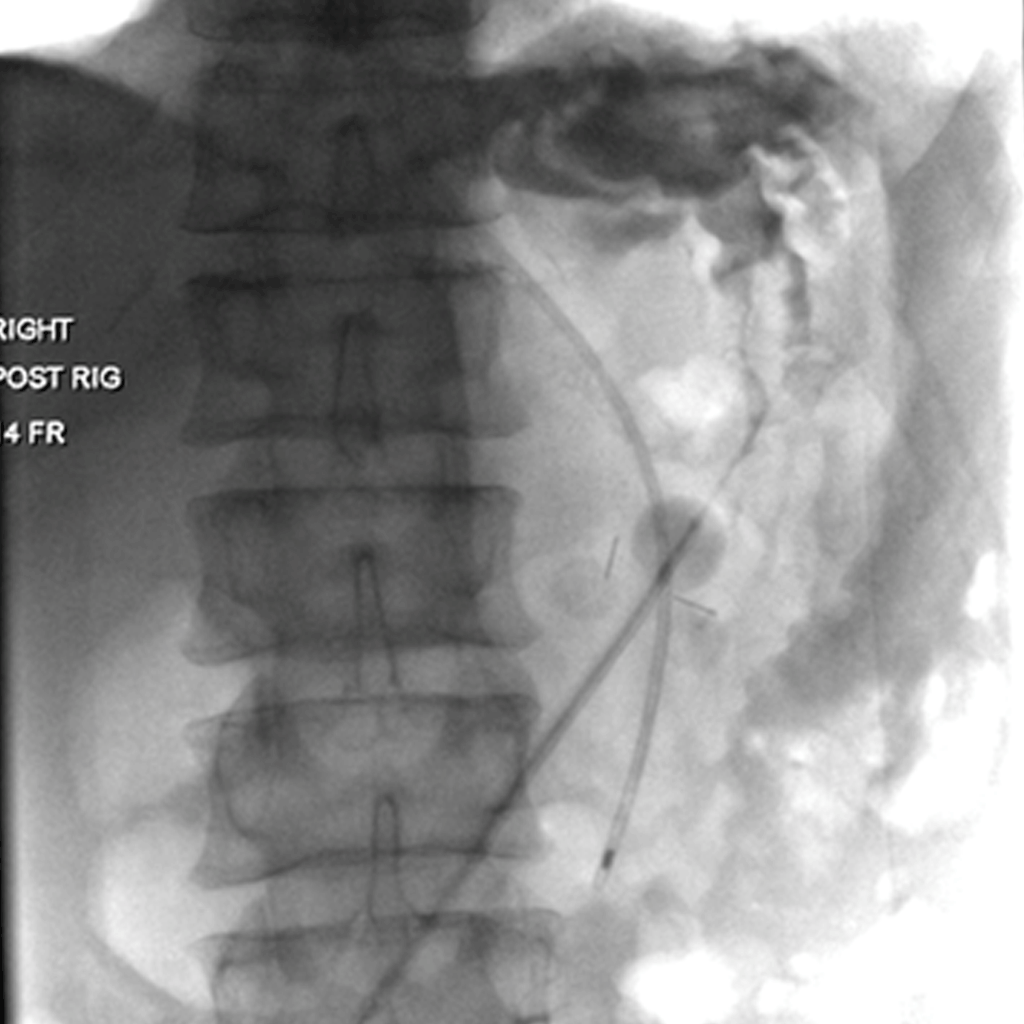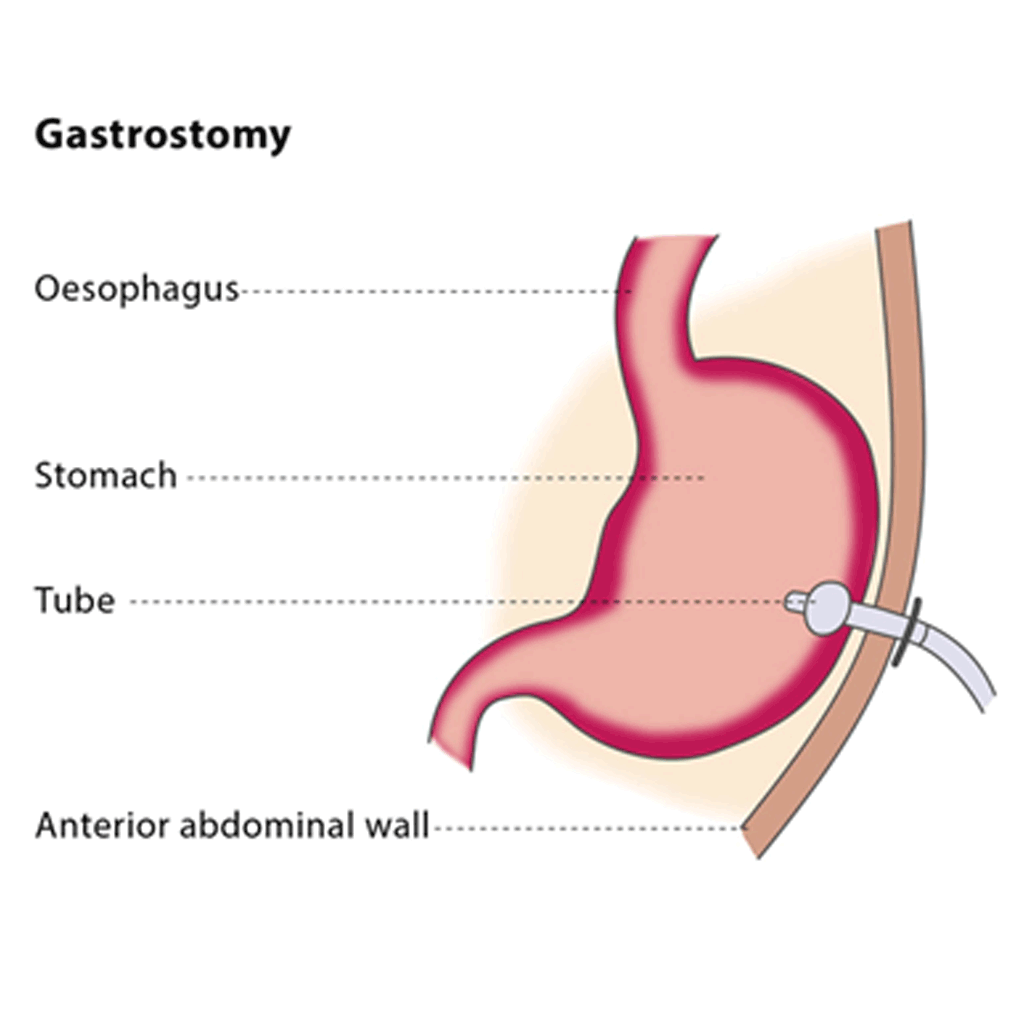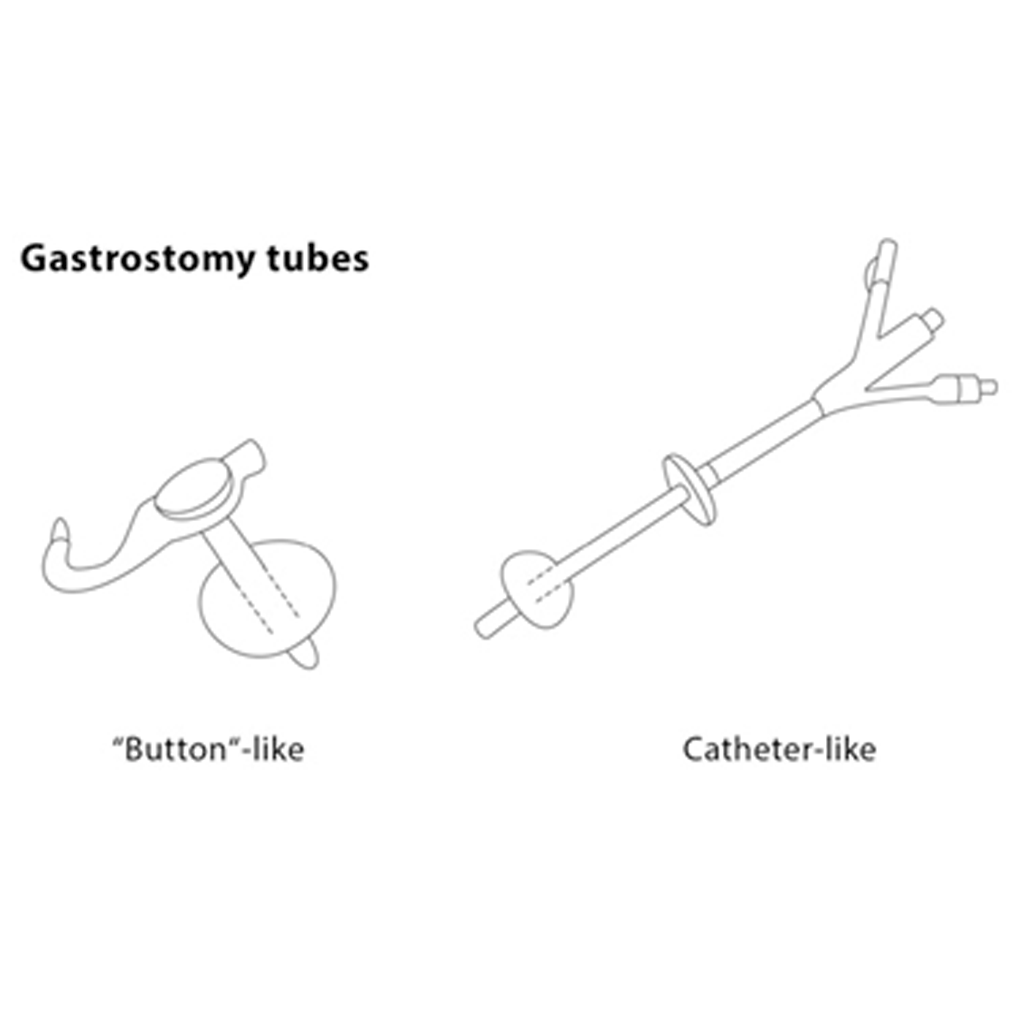GASTROSTOMY
Patient Education Material
Gastrostomy is a procedure in which a gastrostomy tube is placed into your stomach for nutritional support.
You may be recommended for a gastrostomy if for some reason you are unable to eat enough to sustain yourself, such as if you are unable to swallow safely.
A gastrostomy tube is a tube that may resemble a catheter or a button (with a detachable extension). Both types of tubes have a balloon on the tip which keeps them in the correct area and both are therefore suitable for long-term use.
If you are on any anti-coagulation or antiplatelet medication (medication that prevents blood clotting), you will stop taking it before the procedure, if possible.
You should not eat anything before the procedure. The interventional radiologist will insert a tube in your nose which will go into your stomach (called a nasogastric tube) and then will perform an ultrasound of your stomach to check the position of your liver and confirm that the tube is correctly placed.
A gastrostomy is usually performed under local anaesthesia or moderate sedation. You may be given antibiotics beforehand to prevent infection, but this is not always necessary. You will lie on your stomach on a C-arm table, a table designed to be used in imaging procedures.
In most cases, you will be given an injection of glucagon hydrochloride, which temporarily paralyses the muscles in your stomach. Then, air will be entered through the nasogastric tube and into your stomach. The interventional radiologist will perform fluoroscopy of the stomach to determine the exact puncture site, which is usually over the middle part of the stomach. In some cases, such as if part of your colon or liver is in front of your stomach, the gastric procedure may be carried out using CT.
The interventional radiologist will then perform a gastropexy, which is the fixation of the anterior gastric wall to the abdominal wall, and here at least three anchors (T-fasteners) will be used to make a triangle on the abdominal wall. The interventional radiologist will use a small needle to puncture your stomach in the centre of the triangle.
The interventional radiologist will confirm the position of the needle tip within your stomach by injecting air or a contrast substance. They will then use the needle to position a guidewire inside your stomach.
The position of the needle tip within the stomach is confirmed using air or contrast media under imaging. The interventional radiologist will then position a guidewire through the needle and into your stomach, followed by a series of dilators which will be inserted over the guidewire to expand the area around it. The gastrostomy tube will then be inserted into your stomach. It has a balloon at the end which will be inflated to keep it in place and the guidewire will be safely removed. The interventional radiologist will inject a few millilitres of contrast media through the gastrostomy tube so that the position of the tube can be checked using fluoroscopy.
You will probably be asked to stay in hospital overnight, though the procedure can in some cases be performed as an outpatient procedure. You may experience some discomfort around the catheter in the first few hours following the procedure.
The entry point for the gastrostomy tube should be checked daily for signs of leakage or infection. You will be able to begin eating again 8-24 hours after the procedure and after you have consumed 50 ml of water per hour for at least four hours without any negative effects. The gastropexy anchors can be safely removed 10-14 days after the procedure.



You may be advised to have a gastrostomy tube if you are unable to eat normally. The most common reasons for being unable to eat are neurological causes that prevent normal swallowing (such as stroke or dementia), anatomical situations (such as during correction procedures of cleft lip and palate anomalies) and obstruction of the gullet (such as the presence of head and neck tumours, post-radiation conditions). If you have a cancerous tumour in your bowel which causes a blockage, you may be recommended for a gastrostomy tube to decompress the stomach.
As a general rule, enteral feeding (delivering food directly into the stomach) is recommended when the patient is unable to eat for at least 7-14 days. If you have been unable to eat normally for more than 30 days, you may be recommended to have a gastrostomy or a gastrojejunostomy tube placed. If you are unable to eat but are expected to be able to eat normally within 30 days, your doctor will suggest a nasogastric tube (a tube delivering food through your nose to your stomach) or nasoenteric tube (which delivers food through your nose to your small intestine).
The procedure is not recommended for you if you have a blood-clotting disorder if your colon or liver is positioned between your stomach and abdominal wall (as this prevents a safe access route), if you have peritonitis (inflammation of the thin tissue wall which covers most of your abdominal organs as well as the inner abdominal wall), if you suffer from untreatable massive ascites (abnormal fluid in your abdomen), or if you have a blockage in your bowel (unless the gastrostomy is recommended to decompress your stomach).
This procedure may not be suitable for you if you have dilated blood vessels in your oesophagus or stomach, changes in the top layer of the stomach lining, abnormal cell growth in the wall of your stomach, cancer that affects the lining of the abdominal cavity, if you are morbidly obese or if you have had previous gastric or upper gastrointestinal surgery.
The technical success rate of the gastrostomy procedure is very high, at around 97%.
Given MF, Hanson JJ, Lee MJ. Interventional radiology techniques for provision of enteral feeding. Cardiovasc Intervent Radiol 2005; 28(6):692-703.
Kindly contact:
- One PKLI Avenue, DHA, Phase-6, Lahore, Pakistan.
- info@pkli.org.pk
- +92 42 111 117 554

